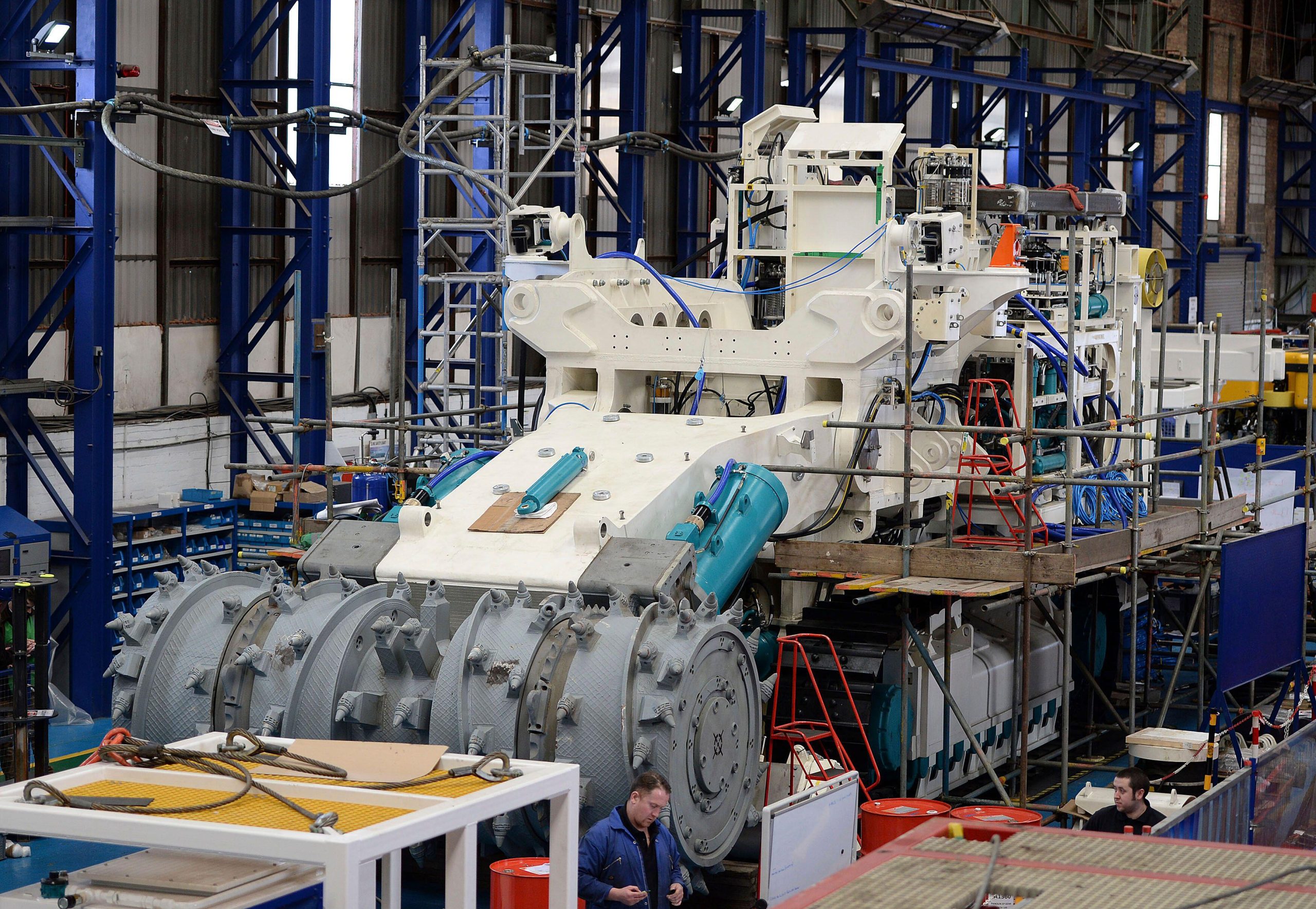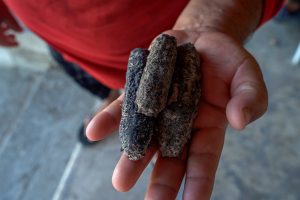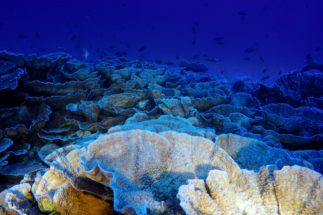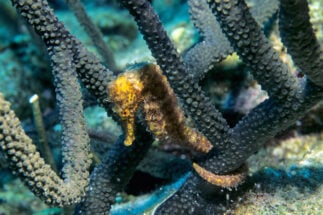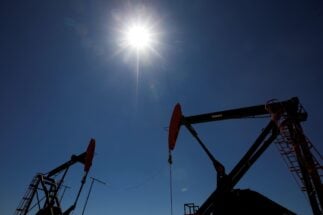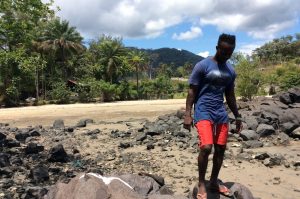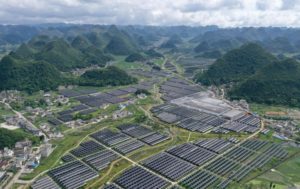Belgium, China and Russia are among the main backers of mining the seabed to extract the rare minerals needed for the energy transition. Yet, without a clear international framework for this practice, it could lead to environmental damage, biodiversity loss and the alteration of the seabed.
Fearsome-looking machines scrape the seabed in order to separate stones known as polymetallic nodules that are rich in cobalt, copper, manganese and nickel and pump the material to the surface through giant tubes. Sediment is returned to the sea via another conduit.
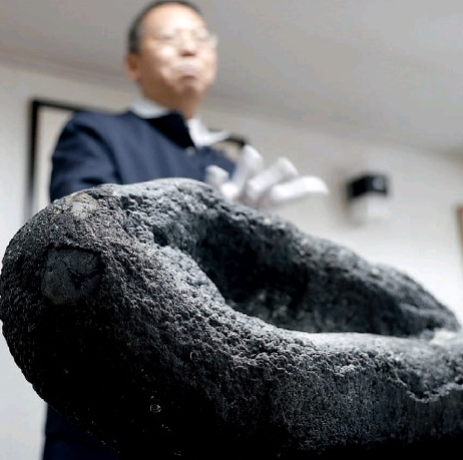
However, these deep waters host species and ecosystems that provide sustenance and ecosystem balance, and are highly vulnerable, according to recent studies by Greenpeace and WWF Europe.
Mexico was initially hesitant about this type of mining but now an international settlement could open the door for extraction in an area inhabited by vulnerable marine species.
Mining “Don Diego”
In 2018, The Secretariat of Environment and Natural Resources (Semarnat) denied the environmental license for the “Don Diego” mine, promoted by Exploraciones Oceánica S. de RL de CV, a subsidiary of the American Odyssey Marine Explorations, on the grounds that it could damage the habitats of loggerhead turtles, gray and humpback whales and fishing areas. It also noted the lack of a public consultation on the proposed operation.
The project, which covers an area of 91,267 hectares in the Bay of Ulloa, planned to dredge the seabed to depths of between 60 and 90 metres to extract 7 million tons of phosphate sand annually over 50 years. This would yield some 3.5 million tonnes of phosphorus.
Faced with this, in 2019 the corporation sued Mexico for US$3.54 billion of lost investment before an arbitration panel under the then North American Free Trade Agreement (NAFTA, which was replaced that same year by a new trade agreement between Mexico, the US and Canada).
There is no governance framework for the high seas. That means that marine protected areas cannot be established and there are no security measures
If Mexico loses, it could lose its ability to veto extractive projects based on the precautionary principle that safeguards against anticipated damage.
Several other exploration ventures are underway in the Clarion-Clipperton Zone (ZCC), an offshore area outside Mexico’s national Exclusive Economic Zone which extends over 4.5 million square kilometers – twice the size of Mexico. The zone contains almost 6,000 million tons of manganese, 270 million tons of nickel, 234 million tons of copper and 46 million tons of cobalt.
Mexico did not object to the granting of these permits, according to requests for information made by Diálogo Chino to Semarnat and the ministry of Foreign Relations despite environmental activists and academics warning of possible damage to the seabed and fisheries. They urge a moratorium on permits for exploration and extraction.
Meanwhile, there is still no binding agreement for the environmental protection of the high seas.
Lack of clarity in legislation
For Gladys Martínez, a lawyer for non-governmental organisation the Inter-American Association for the Defense of the Environment, it is “worrying” that the International Seabed Administration (ISA) provides concessions without scientific rigour.
“There is no governance framework for the high seas. That means that marine protected areas cannot be established and there are no security measures. There are a lot of activities that are carried out without being organised,” Martínez told Diálogo Chino.
Created in 1994 under the United Nations Convention on the Law of the Sea (UNCLOS), ISA, headquartered in Jamaica, controls activities carried out on the seabed of waters outside national jurisdiction and has declared nine areas of environmental interest where permits cannot be granted. UNCLOS stipulated that the ZCC and its mineral resources are “the common heritage of humanity”.
Yet, ISA has also signed 31 contracts for the exploration of polymetallic nodules, sulfides and cobalt crusts with 22 companies in areas adjacent to those protected. The total area granted for exploration covers one million square kilometres.
Did you know…?
The International Seabed Administration controls activities carried out on the seabed of waters outside national jurisdiction
Of these contracts, the Beijing-based China Ocean Mineral Resources Research and Development Association (COMRA) owns three, as does the South Korean government. Beijing-based China Minmetals Corporation, which is overseen by the State-owned Assets Supervision and Administration Commission, has one, as does Beijing Pioneer Hi-Tech Development Corporation.
Little is known about these projects. In 2019, Liu Feng, COMRA’s general secretary, revealed that China makes about five exploratory trips each year to test technologies and take mineral samples. The Chinese government also agreed to create a training center for delegates from developing nations in partnership with ISA, and to design a system for environmental impact assessments.
Uncertain future
Promoters of underwater mining say that the energy transition, which depends upon the manufacture of wind turbines, solar panels and electric batteries, requires cobalt, copper, lithium, nickel and so-called “rare earths”. These are a set of 17 metals and China and the US are the world’s largest producers.
Violeta Núñez, an academic at the state Metropolitan Autonomous University, says these operations are happening at great magnitude.
17
Rare earths exist and are used in a variety of technologies
“There is interest from companies to move towards the sea, because the world is going to require it. This is crucial for the clean energy industry. The interest is to advance on those spaces where the world’s greatest mining wealth is,” said Núñez, who is the author of Capital towards the sea.
While ISA must approve environmental standards for eventual exploitation permits, the future of the Global Treaty of the Oceans, which will mandate the protection and sustainable use of biodiversity in areas outside of national laws, under the UNCLOS, has been stalled by the pandemic.
Next August will see the fourth meeting of UNCLO’s Intergovernmental Conference which will be held in New York, following talks that began in 2019. One of the issues that generates friction among countries is environmental impact assessments and the role of a scientific and technical body within the treaty.
The pact is going to create a global framework, which is what is needed, according to Martínez. “You cannot talk about marine mining without a global standard, you have to talk about areas outside of national jurisdictions. In Latin America there are several key areas for marine protection, but they require a global standard,” she said.
In 2019 the international campaign for a moratorium on underwater exploration and exploitation gained strength.
Motion 69 of the world congress of the International Union for Conservation of Nature, to be staged next September in the French city of Marseille in face-to-face and virtual format, promotes this break for the protection of deep-sea ecosystems and biodiversity. If approved, the moratorium will be part of the agenda for the next four years.
Núñez wonders what will happen when exploitation begins. “We don’t know yet what is going to stop those permits. The business focus is on profit, there is no idea about sustainability. The only options that the mining industry sees are the ocean floor,” she said.
Mónica Franco, director of Costa Salvaje NGO, stresses the importance of moratoria:”We have to question whether we want short-term benefits or to invest in areas where benefits are not seen immediately, but over the next generations.”
